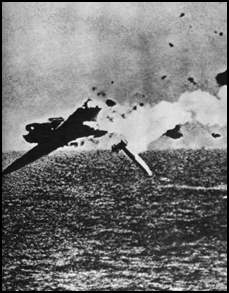
Saturday, April 1, 1944
In the Caroline Islands... US aircraft from Task Force 58 (Admiral Spruance) attack Woleai Island. In three days of attacks about 130,000 tons of Japanese shipping has been sunk as well as 7 small warships. American forces have lost 26 planes and claim 150 Japanese airplanes shot down.
On the Eastern Front... Considerable German forces are surrounded near Skala between the advancing Soviet 1st and 2nd Ukrainian Fronts. The 1st Ukrainian Front reaches the Jablonica Pass.
In the Admiralty Islands... US forces occupy Ndrilo and Koniniat.
Sunday, April 2, 1944
In Burma... Forces of the Japanese 15th Army (Mutaguchi) continue to advance. They have cut the road between Kohima and Imphal. South of Imphal, the British 17th Indian Division has nearly completed the retreat to its new positions.
On the Eastern Front... Soviet forces enter Romania, crossing the Prut River east of Chernovtsy.
In Liberated Italy... The Communist Party declares its support of the Badoglio government.
In El Salvador... An attempted military coup results in the death of approximately 300 people.
Monday, April 3, 1944
In Occupied Norway... Operation Tungsten: the German battleship Tirpitz is attacked and damaged by 41 Barracuda bombers, escorted by 41 fighters, from the carriers (Victorious, Furious and 4 escort carriers) of the British Home Fleet. The aircraft achieve 14 hits and cause damage that keeps the battleship out of action for three months. There are 438 German casualties. Four planes are lost.
Over Occupied Hungary... The B-17 and B-24 bombers of the US 15th Air Force drop 1100 tons of bombs on rail and industrial targets in Budapest. During the night, RAF Liberator and Wellington bombers carry out a follow-up raid. The attacks necessitate the closure of all the railway stations in the city.
In the United States... The Supreme Court rules that Negroes have the right to vote in Texas.
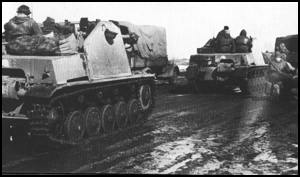
Tuesday, April 4, 1944
On the Eastern Front... German forces conduct local counterattacks near Kovel and farther south where Soviet forces are prevented from gaining a pass through the Carpathian mountains near Kolomya.
In Burma... The Japanese 31st Division attacks British defenses at Kohima. Both routes out of the town, toward the rear, are cut. The capture of this supply depot is crucial to sustaining the offensive. Japanese forces are expecting to resupply from its stocks.
In Algiers... Free French leader, Charles de Gaulle, announces changes to the Committee of National Liberation. Two communists are appointed and de Gaulle is made head of the armed forces. General Giraud is being sidelined.
In Egypt... A Greek brigade mutinies under the leadership of Communists. British troops blockade the camp until April 24th. The Greeks kill 1 British officer.
In Occupied France... Members of the French resistance halt production at the Bronzavia aircraft components plant near Paris.
Over Romania... The Bucharest marshalling yards are bombed by heavily escorted bombers of the US 15th Air Force. A total of 20 aircraft are lost. Civilian casualties are reported to amount to 2942 killed and 2126 injured.
Wednesday, April 5, 1944
Over Romania... The Ploesti oil installations and rail sidings are attacked by B-17 and B-24 bombers of the US 15th Air Force, with a strong fighter escort. A total of 12 planes are lost. Determined German, Romanian and Bulgarian fighter opposition is encountered as well as heavy flak over the target. A reported 262 civilians are killed and 361 are injured.
On the Eastern Front... Soviet 3rd Ukrainian Front (Malinovski) forces reach Razdelnaya [also known as Kishinev], cutting the rail line from Odessa.
In London... The British government ceases telephone service to Ireland and ends the distribution of newspapers to there and Gibraltar.
In the United States... Wendell L. Willkie withdraws from the Presidential election campaign.

Thursday, April 6, 1944
On the Eastern Front... After a march of about 150 miles, the continuously moving but surrounded forces under the command of the German 1st Panzer Army -- Hube's Pocket -- establish contact with the German 4th Panzer Army to the south of Tarnopol. Although the German force has lost some heavy equipment and weapons, as well as sustaining casualties, it has also destroyed considerable quantities of Soviet equipment during the fighting withdrawal to the German lines. The escaping troops are able to rejoin the line within days. Marshal Zhukov, commanding the Soviet 1st Ukrainian Front, is subsequently blamed for the Soviet failure to destroy the encircled German force of about 200,000 troops. There is heavy fighting north of Razdelnaya as a small pocket of German and Romanian forces (elements of German 6th Army) is reduced by forces of the Soviet 3rd Ukrainian Front.
Over Occupied Yugoslavia... British Spitfire fighter-bombers of the Desert Air Force destroy many planes on Banja Luka airfield.
In Occupied France... French resistance members stop production at the Timken ball-bearing factory, near Paris.
In the United States... Rose O'Neill, artist and creator of the "Kewpie Doll," dies aged 68.
Friday, April 7, 1944
In Burma... Near Kohima, Japanese forces encircle the British 161st Brigade, part of British 33rd Corps (Stopford) at Jotsoma and block the main road to the west from Kohima near Zubza. About 3500 British-Indian troops are now trapped in Kohima and engaged in hand-to-hand fighting for the next 13 days.
On the Eastern Front... Heavy fighting north of Razdelnaya continues as a small pocket of German and Romanian forces is reduced. To the north, German forces encircled near Tarnopol make an unsuccessful attempt to break out.
In Germany... Goebbels is appointed "City President of Berlin," superceding the authority of the Oberburgmeister.
In Occupied Hungary... Recent Allied bombing raids on Budapest cause the large scale evacuation of civilians to begin.
Saturday, April 8, 1944
In Occupied Poland... The Germans begin long-distance cargo flights between Polish airfields and Manchuria during which Ju290A-9 transport aircraft, with sufficient fuel for a 5500 mile flight, travel at altitudes of up to 38,000 feet to cross the Soviet Union without detection.
On the Eastern Front... Heavy fighting north of Razdelnaya continues as a small pocket of German and Romanian forces is eliminated by forces of the 3rd Ukrainian Front. To the south, Soviet forces of 4th Ukrainian Front (Tolbukhin) begin attacking in the Crimea. The German 17th Army (Jaenicke) is trapped there. Meanwhile, to the northwest, the 1st Ukrainian Front (Zhukov) and 2nd Ukrainian Front (Konev) penetrate deeper into Romania. Botosani, Dorohoi and Siret to the north are all captured. Patrols from 1st Ukrainian Front reach the Slovakian frontier while forces of 2nd Ukrainian Front reach the Siret River on a 60-mile frontage.
Sunday, April 9, 1944
On the Eastern Front... The Bukovina region [formerly a province of Austria-Hungary] is completely occupied by Soviet forces. The Soviet 3rd Ukrainian Front reaches the outskirts of Odessa.
In Algiers... Free French General Giraud is appointed Inspector General of the Army.
Monday, April 10, 1944
On the Eastern Front... Soviet forces capture Odessa. The German and Romanian defenders have evacuated about 24,000 men, many of them wounded, as well as 55,000 tons of supplies. In the Crimea, Soviet forces of the 4th Ukrainian Front continue to attack the defensive positions of the German 17th Army. Armyansk is captured. Meanwhile, the forces of 2nd Ukrainian Front (Konev) cross the Siret River and capture Radauti and Suceava.
In Burma... British General Slim, commanding 14th Army, prepares a counteroffensive. British troops surrounded at Imphal and Kohima continue to be supplied by air. The 33rd Corps (Stopford) is tasked with breaking through Japanese lines and relieving Kohima.
In the North Atlantic... German submarines U-515 and U-68 are sunk by elements of US Task Group 21.12 which includes the carrier Guadalcanal.
Tuesday, April 11, 1944
On the Eastern Front... In the Crimea, forces of the Soviet 4th Ukrainian Front capture Dzhankoy. The Soviet Independent Coastal Army (Yeremenko) captures Kerch.
Over Occupied Holland... A force of 6 RAF Mosquito bombers destroy the Central Population Registry building in The Hague. Gestapo records are destroyed.
Wednesday, April 12, 1944
On the Eastern Front... Troops of the 3rd Ukrainian Front (Malinovski) occupy Tiraspol, 97 km northwest of Odessa. The Germans begin a limited evacuation of the Crimea. Over the next four days about 67,000 Germans and Romanians will be safely removed despite Soviet attempts to attack the evacuating troops by air and sea.
In Liberated Italy... King Victor Emmanuel announces his plans to retire from office once the Allies enter Rome and to appoint Crown Prince Umberto of Piedmont "Lieutenant of the Realm."
Thursday, April 13, 1944
On the Eastern Front... In the Crimea, the Soviet 4th Ukrainian Front and the Independent Coastal Army advance. Feodosia, Evpatoriya and Simferopol are all taken. The German and Romanian forces of 17th Army are fall back on Sevastopol in some disorder. To the west, forces of the 3rd Ukrainian Front capture Ovidiopol at the mouth of the Dnestr River.
In New Guinea... Australian forces capture Bogadjim.
Over Occupied France... American and British tactical air forces conduct numerous attacks on German coastal batteries in Normandy.
In Britain... The 5th Earl of Lonsdale, sportsman and donor of the "Lonsdale Belts" awarded to champion boxers, dies at age 87.
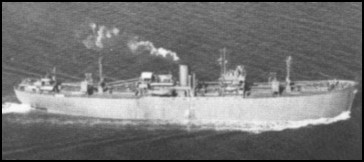
Friday, April 14, 1944
In India... The transport ship Fort Stikine, carrying explosives and cotton bales, catches fire and explodes in the Bombay Docks. A total of 27 ships are wrecked in the harbor, about 740 people are killed or missing and 476 servicemen and about 1000 civilians are injured. (In the following six months, some 10,000 troops and civilians remove one million tons of rubble from the area.)
On the Eastern Front... Both the Soviet 1st Ukrainian Front and 2nd Ukrainian Front reach the Carpathian foothills -- creating a gap between the defenses of German Army Group North Ukraine and Army Group South Ukraine.
In the Soviet Union... General Nikolai F. Vatutin, the former commander of the Soviet 1st Ukrainian Front, dies of wounds received in a partisan ambush, by Ukrainian nationalists, on February 29, 1944.
In Burma... British forces break through the Japanese road block at Zubza and the British 161st Brigade at Jotsoma is relieved by attacks of other elements of the 2nd Indian Division.
In Algiers... Free French General Giraud is placed on the retired list.
Saturday, April 15, 1944
On the Eastern Front... Soviet forces of the 1st Ukrainian Front capture Tarnopol after several weeks of fighting. The German commander, General von Neindorff, is killed in the fighting and only a part of the garrison escapes to reach the German lines.
Over Romania... The US 15th Air Force sends 500 sorties to Bucharest and Ploesti.
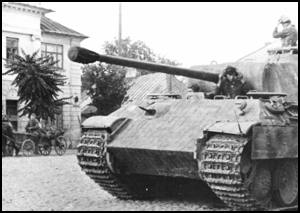
Sunday, April 16, 1944
On the Eastern Front... In the Crimea, Soviet forces of the Independent Coastal Army capture Yalta. To the west, the 3rd Ukrainian Front cross the Dnestr River to the north and south of Tiraspol. German forces counterattack the Soviet bridgeheads over the Dnestr but fail to dislodge the Red Army defenders.
Over Romania... Soviet bombers strike Galatz.
In Occupied Hungary... The Eichmann organization begins the systematic concentration of about 800,000 Jewish Hungarians in ghettoes.
Monday, April 17, 1944
Over Bulgaria... US B-17 and B-24 bombers attack Sofia.
Over Occupied Yugoslavia... US B-17 and B-24 bombers attack Belgrade.
In the English Channel and North Sea... The British Royal Navy and Bomber Command begin intensive mining of the approaches to the English Channel and as far north as the Danish coast. This operation is intended to prevent German interference with the D-Day invasion fleet. (It continues until June 5th by which time 7000 mines are laid. An estimated 100 light warships and other vessels are sunk by the mines.)
Tuesday, April 18, 1944
Over Britain... The last of the "Little Blitz" air raids on London is conducted by 125 aircraft (14 are lost on the mission). A total of 53 tons of bombs are dropped and a hospital is among the buildings hit.
Over Germany... American B-17 and B-24 bombers attack the Heinkel works at Oranienburg and other targets near Berlin. British Mosquito bombers strike Berlin.
Over Occupied France... RAF Bomber Command drops a record 4000 tons of bombs on marshalling yards and railway workshops at Juvisy, Noisy-le-Sec, Rouen and Tergnier.
In Burma... Elements of the British 5th Brigade link up with the Kohima garrison, breaking the Japanese encirclement.
On the Eastern Front... German and Hungarian forces begin counterattacks around Buchach, between the Dnestr and Pruth rivers, in an effort to free units trapped further east. In the Crimea, Soviet forces of the 4th Ukrainian Front capture Balaklava and reach the outskirts of Sevastopol.
In London... The British government bans all coded radio and telegraph transmissions from London and elsewhere on the British Isles. Diplomatic bags are to be subject to censorship and diplomats are forbidden to leave the country. The only exemptions are for the USA, USSR and the Polish government in exile, in London. These measures are intended to maintain the secrecy of the preparations for D-Day. In addition, incitement to strike is made a punishable offense.
Wednesday, April 19, 1944
On the Eastern Front... The battle for Sevastopol continues as Soviet ships bombard the city. Elsewhere, Soviet advances end as the forces reach their logistical limits.
In the Indian Ocean... The British Eastern Fleet (Admiral Somerville) is reinforced with the USS Saratoga. The carrier aircraft attack Japanese positions at Sabang and nearby airfields. One plane is lost and 27 Japanese planes are claimed to have been shot down.
Over Occupied Europe... The RAF drops mines in the Danube River.
In Washington... The House of Representatives approves an extension of Lend-Lease legislation.
Thursday, April 20, 1944
In the Mediterranean... During the night (April 20-21), the Germans use Neger (in English: Negro) human torpedoes against shipping off Anzio. A total of 37 are launched from beaches and 24 are lost. No results are achieved. Meanwhile, 6 Allied merchant ships are hit by torpedo planes near the Straits of Gibraltar.
In Ankara... The Turkish government orders an end to chrome exports to Germany in response to increasing to Allied pressure.
In Burma... The Allied garrison on Summer House Hill, Kohima, is relieved by the British 2nd Division.
Over Britain... There is an abortive night raid on Hull.
Friday, April 21, 1944
In New Guinea... US Task Force 58 (Admiral Mitscher) attacks Wakde Island, Sawar, Sarmi and Hollandia. The American force includes 12 carriers and cruisers. Aircraft strike during the day and cruisers bombard the Japanese positions at night.
Over Occupied Europe... British bombers drop a total of 4500 tons of bombs on four rail junctions: Cologne, La Chappelle (Paris), Lens and Ottignies (Brussels).
In Liberated Italy... Marshal Badoglio forms a coalition government.
Saturday, April 22, 1944
In New Guinea... American forces begin operations against Japanese positions at Hollandia and nearby. The US 1st Corps (General Eichelberger) lands at Aitape, Tanahmerah Bay and Humboldt Bay. The American force totals 84,000 men. Task Force 77 (Admiral Barbey) provides transport for the landing force. Cruiser forces under the command of Admiral Crutchley and Admiral Berkey provide a covering force. Task Force 58 (Admiral Mitscher) provides additional naval support. The Japanese forces number 11,000 under the command of General Adachi. The operation proves a surprise and the Japanese retire inland.
In the Marshall Islands... US forces occupy Ungelap Island, completing the campaign.
In China... Japanese forces capture Chengchow (Honan).
Sunday, April 23, 1944
On the Eastern Front... German forces of Army Group North counterattack southwest of Narva.
In New Guinea... Advancing US forces capture Hollandia without a fight; Tadji airfield is also taken. The advance inland encounters resistance near the village of Sabron. There is congestion on the beachheads.
In Egypt... In port at Alexandria, a communist inspired mutiny aboard 5 Greek warships is suppressed by loyal Greek forces. A total of 50 casualties are reported.
Monday, April 24, 1944
Over Germany... The US 8th Air Force raids factories and airfields in Friedrichshafen, near Munich. A total of 55 planes are lost, including 14 which land or crash in Switzerland. During the night, 250 RAF Lancaster bombers scatter "Flying Meteor" methane-petrol incendiary bombs over Munich causing devastation in the area between Central Station and the Isar River.
In Liberated Italy... The Italian "Co-Belligerent Air Force" now operates over the Adriatic Sea.
In New Guinea... American forces reach Lake Sentani near Hollandia. To the east, Australian forces advancing from the Huon Peninsula capture Madang.
In Egypt... British troops end their blockade of the mutinous Greek brigade encampment.
Tuesday, April 25, 1944
In Britain... The Luftwaffe carries out the first of a series of nighttime raids on shipping at Portsmouth and Plymouth-Devonport.
In the English Channel... During the night (April 25-26), the British cruiser Black Prince and 3 Canadian destroyers engage German warships: T-29 is sunk (136 killed), T-24 and T-27 are damaged.
In London... The Chancellor of Exchequer promises tax relief for industry after the war is over.
In New Guinea... Allied forces continue to advance. There are reinforcements landed at Humboldt Bay.
Wednesday, April 26, 1944
In New Guinea... The American beachheads at Tanahmerah Bay and Humboldt Bay are linked up. Australian forces, to the east, capture Alexishafen, west of Madang.
In Occupied Norway... Elements of the British Home Fleet, under the command of Admiral Moore, including the battleship Anson and 6 carriers, attempt to attack the German battleship Tirpitz but fail because of bad weather. A German coastal convoy is discovered near Bodo and three ships are sunk.
Thursday, April 27, 1944
In Britain... During the night (April 27-28), 3 American LST landing craft, conducting an invasion exercise (Exercise "Tiger"), are torpedoed by German E-boats in Lyme Bay. A total of 638 troops are killed. This incident is kept secret for fear of damaging Anglo-American relations.
In New Guinea... US troops occupy the main airstrip at Hollandia.
Over Occupied Poland... Soviet aircraft conduct a nighttime raid on Lvov.
Friday, April 28, 1944
In New Guinea... American and Japanese forces, moving west from Wewak, engage near Aitape. In the United States... The Secretary of the Navy, Frank Knox, dies.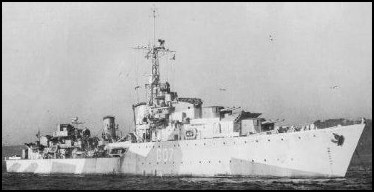
Saturday, April 29, 1944
In the English Channel... During a nighttime sortie, the Canadian destroyer HMCS Athabaskan is sunk by the German Elbing class destroyer T-24 in the early morning hours. Her Captain, John Stubbs and 128 men were lost, 83 taken prisoner and 44 rescued.
In New Guinea... Captured Japanese airfields at Hollandia and Aitape become operational.
In the Caroline Islands... US Task Force 58 (Admiral Mitscher) raids the Japanese base at Truk.
Sunday, April 30, 1944
In Burma... The battle for Imphal continues. Japanese forces, however, are experiencing food shortages.
In the Caroline Islands... US Task Force 58 (Admiral Mitscher) raids the Japanese base at Truk for a second day. Over the two days, the Japanese lose 93 aircraft out of a total 104 while the Americans lose 35 planes. Meanwhile, American Admiral Oldendorf leads a force of 9 cruisers and 8 destroyers to bombard targets in the Sawatan Islands, southeast of Truk.
Copyright © 2018 Ralph Zuljan
